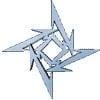Share your photos by tagging us and using the hashtag #BigGreenEgg.
Want to see how the EGG is made? Click to Watch
Dome temperature significantly cooler than the grate temp
Comments
-
Hi my iGrill shows a 50C (90F) higher temp than the dome. I thought something must be wrong so I have inserted additional probes. And replaced the dome one from BGE with an iGrill electronic one. Still all the same.
Which one should I trust - and use when the recipe (for ribs 3-2-1 method) asks for me to aim for 110C - is that at dome or at grill. If at dome, then the grill will be at 160C.
Help please!
-
Is the grid thermo over your heat diverter? I generally see just the opposite but only about 50°. It soon comes together on a long slow cook.
-----------------------------------------analyze adapt overcome2008 -Large BGE. 2013- Small BGE and 2015 - Mini. Henderson, Ky. -
yes. thank you. grid is in shadow of plate setter.
I'm puzzled.
-
Honestly I haven’t used a thermo on the grid in quite a while. I keep the dome thermo calibrated and go by that. Sometimes there is just to much info and it made my head spin.
Im guessing the egg has been heating long enough to be stabilized
-----------------------------------------analyze adapt overcome2008 -Large BGE. 2013- Small BGE and 2015 - Mini. Henderson, Ky. -
What time is it if you have more than one source/watch and all are different?? Same here-as noted by @Mattman3969 you can get into information overload.
Standard practice here is that when a cook temperature is referenced without any modifiers it is dome as that is the one indicator all BGE's show up with. There are thermal gradients inside your BGE just like your clock-box (aka oven). Pick one (make sure it is accurate) and ride with it. Simplifies the process and BBQ should be relaxing. FWIW-
Louisville; Rolling smoke in the neighbourhood. Life is too short for light/lite beer! Seems I'm livin in a transitional period. CHEETO (aka Agent Orange) makes Nixon look like a saint. -
Which one should I trust?
Both - probably. There are real differences within an egg. Depending on placement of the temp probe, the differences can be extreme. If you want to see real differences, try placing a probe down just above the burning charcoal. Most recipes referenced on this forum assume dome temps. Dome temps tend to be more stable and consistent. Grid level temps can be significantly influenced by exact distance from water pans, cold masses of protein, and placement near major airflow drafts. Even when a fire does not change in size (consistent BTU output) grid temps tend to change during the cook. Dome temps less so.
Southeast Florida - LBGE
In cooking, often we implement steps for which we have no explanations other than ‘that’s what everybody else does’ or ‘that’s what I have been told.’ Dare to think for yourself. -
I use the grate temperature. If I am doing ribs at 225, the thermometer in the dome may show 250-260.
-
my dome temp is usually 50 degrees cooler than grate temp using the smobot.
South of Columbus, Ohio. -
Thank you. All very useful comments and it has made me experiment. So it turns out that the BGE thermometer was uncalibrated. I now have calibrated and when that shows 125C I have three iGrill probes at grill level (one a temp probe - the other two meat probes adopted to that use) at three very different temperatures - 114, 100 and 82. So as jctBoynton says - a great variation.
-
I've never measured grid temp and don't care what it is. Don't know the typical difference between dome and grid temps either, just that there is one, many actually. Grid temp at point A is different than grid temp at point B or C.
BGE puts their thermo in the dome, as does every other grill mfg, my kitchen stove mfg put their temp sending unit at the top of the oven and most recipes specify dome temp or "oven" temp. There is no way to measure grid temp without buying another toy. Dome is good enough for me.
I hate it when I go to the kitchen for food and all I find are ingredients!
MichaelCentral Connecticut -
About the only time I use the grid as a temp control spot is when I’m baking. Or if I’m feeling lazy I run the egg 30-50° hotter than recipe calls for.
-----------------------------------------analyze adapt overcome2008 -Large BGE. 2013- Small BGE and 2015 - Mini. Henderson, Ky. -
I would be very surprised if two calibrated sensors gave the same temperature reading at any two different vertical positions inside a closed egg.Lump typically burns at 1400ºF. right? So air enters the lower vent at ambient temperature, is heated by the fire, gives up some BTUs to whatever it is you're cooking, and exits the "stack" somewhat cooler than it was passing by the fire.So the probe placed above the grill but below the exhaust is simply the temperature at that location. It's not in dispute that the closer to the fire, the hotter the air, right? So the grill temp should be higher than the dome temp.
Indianapolis, IN
BBQ is a celebration of culture in America. It is the closest thing we have to the wines and cheeses of Europe.
Drive a few hundred miles in any direction, and the experience changes dramatically.
-
My Dome temperatures are ALWAYS hotter than the grid, if I'm cooking indirect. Always.
The reason for this is the food is obviously over the plate setter, so the heat can only rise up the sides through the openings on the side of the conveggtor, and will hit the dome and drop down towards the meet. This is illustrated in a few BGE brochures and videos.
The other reason is there is nothing to absorb heat in the dome, everything is at equilibrium, while the meat is often cooling the surrounding air ... so often my probe is about 30 to 50F cooler at the grid than at the dome, and that difference closes up considerably as the meat reaches it's target internal temperature, especially when you are aiming for 200F on cooks like with pulled pork or brisket. Towards the end the two temperatures are normally within 5F of each other ... especially if I've removed the water pan ... because I wrapped the meat.Napoleon Prestige Pro 665, XL BGE, Lots of time for BBQ!
Categories
- All Categories
- 184K EggHead Forum
- 16.1K Forum List
- 461 EGGtoberfest
- 1.9K Forum Feedback
- 10.5K Off Topic
- 2.4K EGG Table Forum
- 1 Rules & Disclaimer
- 9.2K Cookbook
- 15 Valentines Day
- 118 Holiday Recipes
- 348 Appetizers
- 521 Baking
- 2.5K Beef
- 90 Desserts
- 167 Lamb
- 2.4K Pork
- 1.5K Poultry
- 33 Salads and Dressings
- 322 Sauces, Rubs, Marinades
- 548 Seafood
- 175 Sides
- 122 Soups, Stews, Chilis
- 40 Vegetarian
- 103 Vegetables
- 315 Health
- 293 Weight Loss Forum







